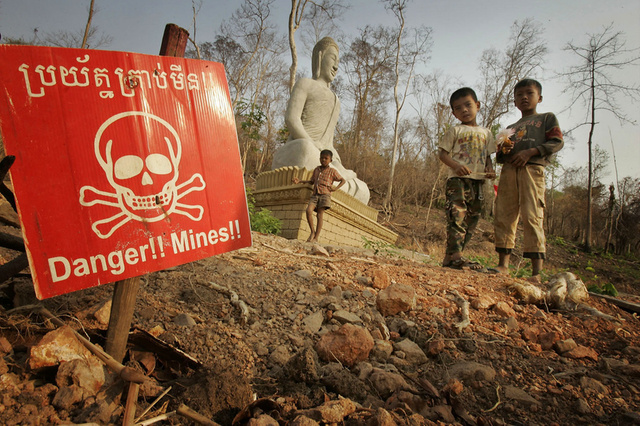
Landmines are the leftovers of war, marking a conflict of the past that continues to haunt populations in the present. The remnants of a long gone violence have the ability to kill and injure, while simultaneously keeping communities in fear and in poverty and limiting development.
Contrary to popular belief, there are still many detrimental effects of landmines. “People tend to think of landmines as a part of war and post-conflict that was dealt with a long time ago, but they don’t think of how it holds people back from development,” says Sara Rose-Carswell, who works with HALO Trust, a group that removes landmines from countries like Somaliland, Laos and Cambodia. In order to move past conflict and towards development, landmine removal needs to move up on the international agenda.
… It was not until 1997 that countries signed the Ottawa Treaty to ban landmines and destroy the stockpiles.
Landmines are instruments of war that do not discriminate between combatants and civilians and remain in the environment for decades. Designed to be buried beneath the surface and detonate with pressure from above, landmines are usually undetectable and can kill without any warning.
Between 1996 and 2008, 4,320 people were injured by landmines and other “explosive remnants of war” and numbers have not decreased significantly since. In 2011 alone, there were more than 4,000 injuries or deaths as a result of landmine explosions. According to the International Campaign to Ban Landmines, 71 percent of these victims are civilians and 32 percent are children.
Across the world, children are often put at the greatest risk by preforming tasks like fetching water or planting seeds, and are most likely to be killed rather than severely injured. To make matters worse, a landmine injury or threat can keep kids from medical care or education.
In addition to keeping populations in fear of fatal injury, communities also face the dangers of poverty. Part of the problem is that the poor are often pushed to the areas where the risk is greatest. “It is really the poorest people in these mine-affected countries who are left to live on land still contaminated with the mines. In general, in post-conflict situations, cities are cleared of explosive remnants of war first and then the rural areas,” says Rose-Carswell.
This article first appeared in the Brogen Magazine, 20 August 2014. Read the full article by Caitlin Thompson here
4 April is the International Day of Mine Awareness and Assistance in Mine Action. This year’s 2016 theme is “Mine Action is Humanitarian Action”


